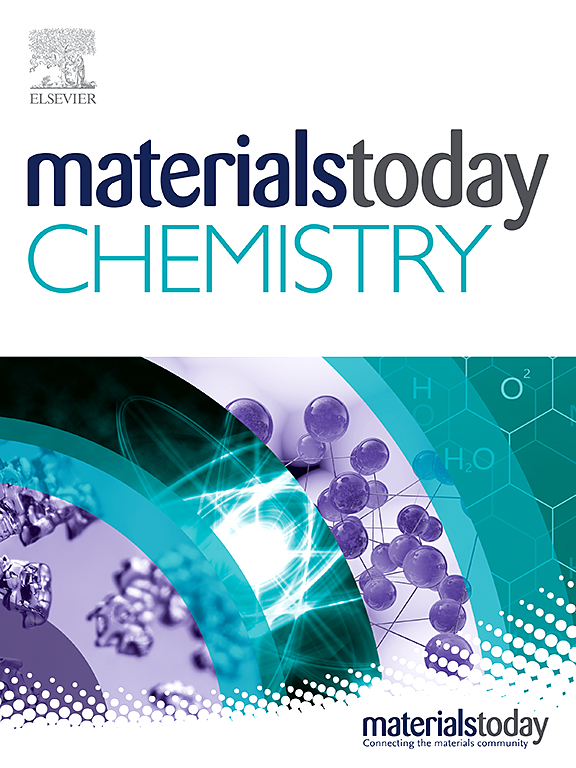通过构建非晶/晶体镍钴-LDH@CoP@镍钴-P 异质结构提高界面工程的电容性能
IF 6.7
2区 化学
Q1 CHEMISTRY, MULTIDISCIPLINARY
引用次数: 0
摘要
镍钴层状双氢氧化物(NiCo-LDH)具有很高的理论电容,作为超级电容器(SC)电极具有很大的应用潜力。然而,导电性差、稳定性低和易聚集一直被认为是其主要缺点。在本研究中,我们通过引入两个磷酸盐壳,成功构建了非晶/晶态 NiCo-LDH@CoP@NiCo-P异质界面复合材料,以改善其电化学性能。NiCo-P 的高速率性能与 CoP 涂层提供的高电容性能相结合,解决了原始 NiCo-LDH 电导率不足的问题,使复合电极具有优异的电化学性能。在电流密度为 1 A g 时,比电容为 1652.8 F g,当电流增加到 20 倍时,速率性能为 70.8%。以交流电为阳极电极制备的不对称超级电容器在水基电解质体系中显示出 118 F g 的高比电容,在 10 A g 下循环 10,000 次后电容保持率为 60.1%,此外,在功率密度为 800 W kg 时,其最大能量密度为 42 Wh kg。这项研究证明了超级电容器异质结构界面设计的巨大潜力。本文章由计算机程序翻译,如有差异,请以英文原文为准。
Interface engineering boosting the capacitive performance by constructing amorphous/crystalline NiCo-LDH@CoP@NiCo–P heterostructure
The nickel-cobalt layered double hydroxide (NiCo-LDH) with high theoretical capacitance has great application potential as supercapacitor (SC) electrodes. Nevertheless, poor conductivity, low stability, and aggregation propensity have been considered as its major drawbacks. In this study, we have successfully constructed the amorphous/crystalline NiCo-LDH@CoP@NiCo–P heterogeneous interface composites by introducing two phosphate shells to improve the electrochemical properties. The combination of NiCo–P's high rate performance with the high capacitive performance provided by the CoP coating addresses the issue of insufficient conductivity of the original NiCo-LDH, resulting in composite electrodes with excellent electrochemical performance. At the current density of 1 A g, the specific capacitance is 1652.8 F g, and the rate performance is 70.8 % when the current increases to 20 times. The capacitance retention is 87.5 % after 5000 cycles at 30 A g. The asymmetric supercapacitor prepared with AC as the anode electrode shows a high specific capacitance of 118 F g in the water-based electrolyte system, with a capacitance retention of 60.1 % after 10,000 cycles at 10 A g. Furthermore, at a power density of 800 W kg, it exhibites a maximum energy density of 42 Wh kg. This study has demonstrated the enormous potential of interface design of heterostructures for supercapacitors.
求助全文
通过发布文献求助,成功后即可免费获取论文全文。
去求助
来源期刊

Materials Today Chemistry
Multiple-
CiteScore
8.90
自引率
6.80%
发文量
596
审稿时长
33 days
期刊介绍:
Materials Today Chemistry is a multi-disciplinary journal dedicated to all facets of materials chemistry.
This field represents one of the fastest-growing areas of science, involving the application of chemistry-based techniques to the study of materials. It encompasses materials synthesis and behavior, as well as the intricate relationships between material structure and properties at the atomic and molecular scale. Materials Today Chemistry serves as a high-impact platform for discussing research that propels the field forward through groundbreaking discoveries and innovative techniques.
 求助内容:
求助内容: 应助结果提醒方式:
应助结果提醒方式:


